When we die, where do we go?, 2025
A death and ecology walk at Abney Park Trust, a nature reserve and historic burial ground in London.
On this walk, we will collectively observe deadwood, headstones, living/dying pathways, and the ecosystems of which we are a part. In the spirit of Abney Park’s history in radical thought, this workshop invites joyful dialogues that gently rethink death and dying narratives. We will guide reflections and discussions, but all participants are welcome to participate in open discussion. Our focus will be on the organic matter that makes up and connects all living things – growth, decay, and rebirth – and how these cycles are visible in Abney Park. Through walking, observing, and conversing together, we’ll consider how endings and beginnings intertwine, and how more-than-human matter can guide us to reconsider our own mortality.
This event is co-led with Katie Crabtree, and is also part of the Antiuniversity Now Festival 2025.
A death and ecology walk at Abney Park Trust, a nature reserve and historic burial ground in London.
On this walk, we will collectively observe deadwood, headstones, living/dying pathways, and the ecosystems of which we are a part. In the spirit of Abney Park’s history in radical thought, this workshop invites joyful dialogues that gently rethink death and dying narratives. We will guide reflections and discussions, but all participants are welcome to participate in open discussion. Our focus will be on the organic matter that makes up and connects all living things – growth, decay, and rebirth – and how these cycles are visible in Abney Park. Through walking, observing, and conversing together, we’ll consider how endings and beginnings intertwine, and how more-than-human matter can guide us to reconsider our own mortality.
This event is co-led with Katie Crabtree, and is also part of the Antiuniversity Now Festival 2025.

From skin to land, from walls to worlds, 2025
An exhibition curated by Victoria Sharples at GLOAM
From skin to land, from walls to worlds is a solo exhibition by Rebecca Halliwell-Sutton, responding to the light and architectural space of GLOAM. Halliwell-Sutton’s practice spans sculpture, photography, and text, harnessing the transformative properties of material, language, and light. Made from aluminium and silver gelatin liquid, her sculptures and photographs hover between object and image – something both three-dimensional and flat. The surfaces of her work are often reflective, dented, broken, and shattered; this vulnerability invites us to consider what lies beneath. In this darkness lies an allusion to violence, extraction, and alchemic processes. In photography, light transforms into darkness, and the materials used – such as silver gelatin – are extracted violently from the earth (silver) and the body (gelatin). Through analogue darkroom processes and forging, Halliwell-Sutton has fabricated a series of ‘developing’ and developed image-objects, investigating material change – both chemical and poetic.
Funded by Sheffield City Council & the Henry Moore Foundation
Photographs: James Clarkson
An exhibition curated by Victoria Sharples at GLOAM
From skin to land, from walls to worlds is a solo exhibition by Rebecca Halliwell-Sutton, responding to the light and architectural space of GLOAM. Halliwell-Sutton’s practice spans sculpture, photography, and text, harnessing the transformative properties of material, language, and light. Made from aluminium and silver gelatin liquid, her sculptures and photographs hover between object and image – something both three-dimensional and flat. The surfaces of her work are often reflective, dented, broken, and shattered; this vulnerability invites us to consider what lies beneath. In this darkness lies an allusion to violence, extraction, and alchemic processes. In photography, light transforms into darkness, and the materials used – such as silver gelatin – are extracted violently from the earth (silver) and the body (gelatin). Through analogue darkroom processes and forging, Halliwell-Sutton has fabricated a series of ‘developing’ and developed image-objects, investigating material change – both chemical and poetic.
Funded by Sheffield City Council & the Henry Moore Foundation
Photographs: James Clarkson
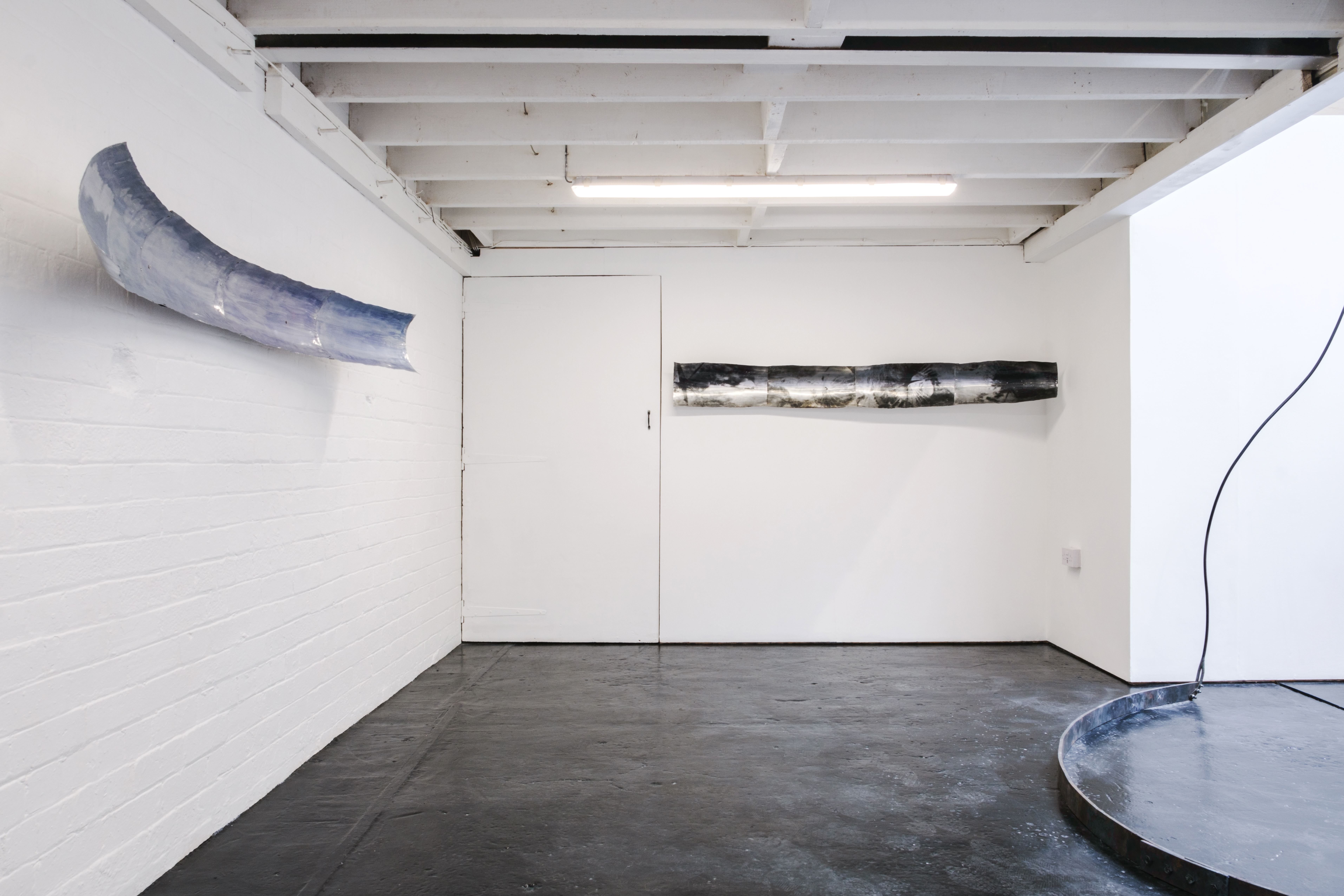
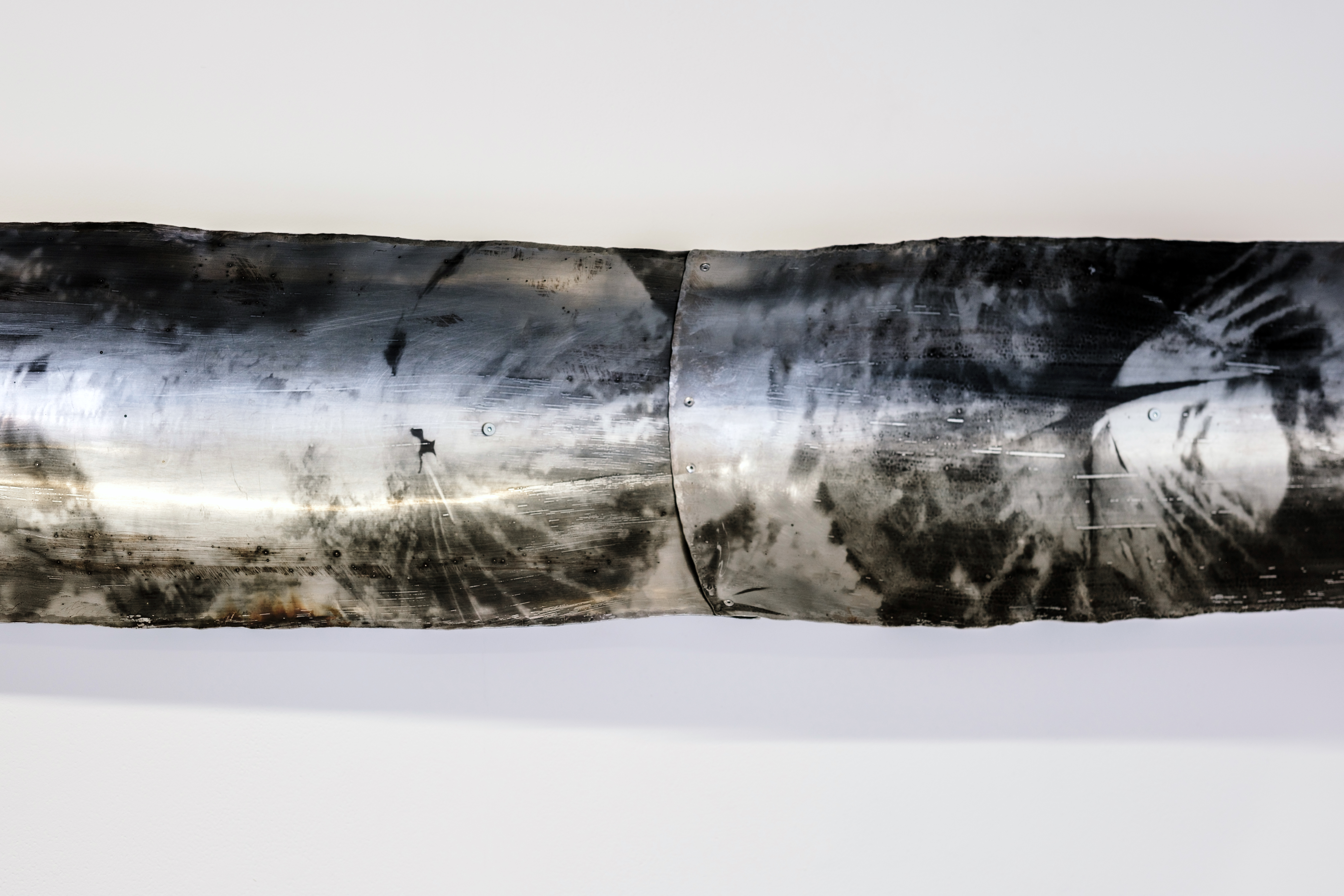

NECROLOGY, 2025
An exhibition at Haarlem Artspace, Wirksworth.
NECROLOGY is a site of mourning, offering an interface with absences, transitions, rituals, suspensions, shrines, and exhumations. The exhibition speculates on material afterlives, ecological grief, and the economies and systems of death(care) and loss.
Featuing: Emma Bolland, Claye Bowler, Jack Brown, Reuben Brow, Charlotte Dawson, Rebecca Elve, Rebecca Howard, Fred Hubbl, Sam Hutchinson, Lily Lavorato, Chloë Louise Lawrence, Bridget Robinson, Victoria Sharples
Curated by Victoria Sharples in partnership with NMRG & Playing Fields. Supported by the AHE Innovation Fund, University of Derby.
Photographs: Emma Croman
An exhibition at Haarlem Artspace, Wirksworth.
NECROLOGY is a site of mourning, offering an interface with absences, transitions, rituals, suspensions, shrines, and exhumations. The exhibition speculates on material afterlives, ecological grief, and the economies and systems of death(care) and loss.
Featuing: Emma Bolland, Claye Bowler, Jack Brown, Reuben Brow, Charlotte Dawson, Rebecca Elve, Rebecca Howard, Fred Hubbl, Sam Hutchinson, Lily Lavorato, Chloë Louise Lawrence, Bridget Robinson, Victoria Sharples
Curated by Victoria Sharples in partnership with NMRG & Playing Fields. Supported by the AHE Innovation Fund, University of Derby.
Photographs: Emma Croman



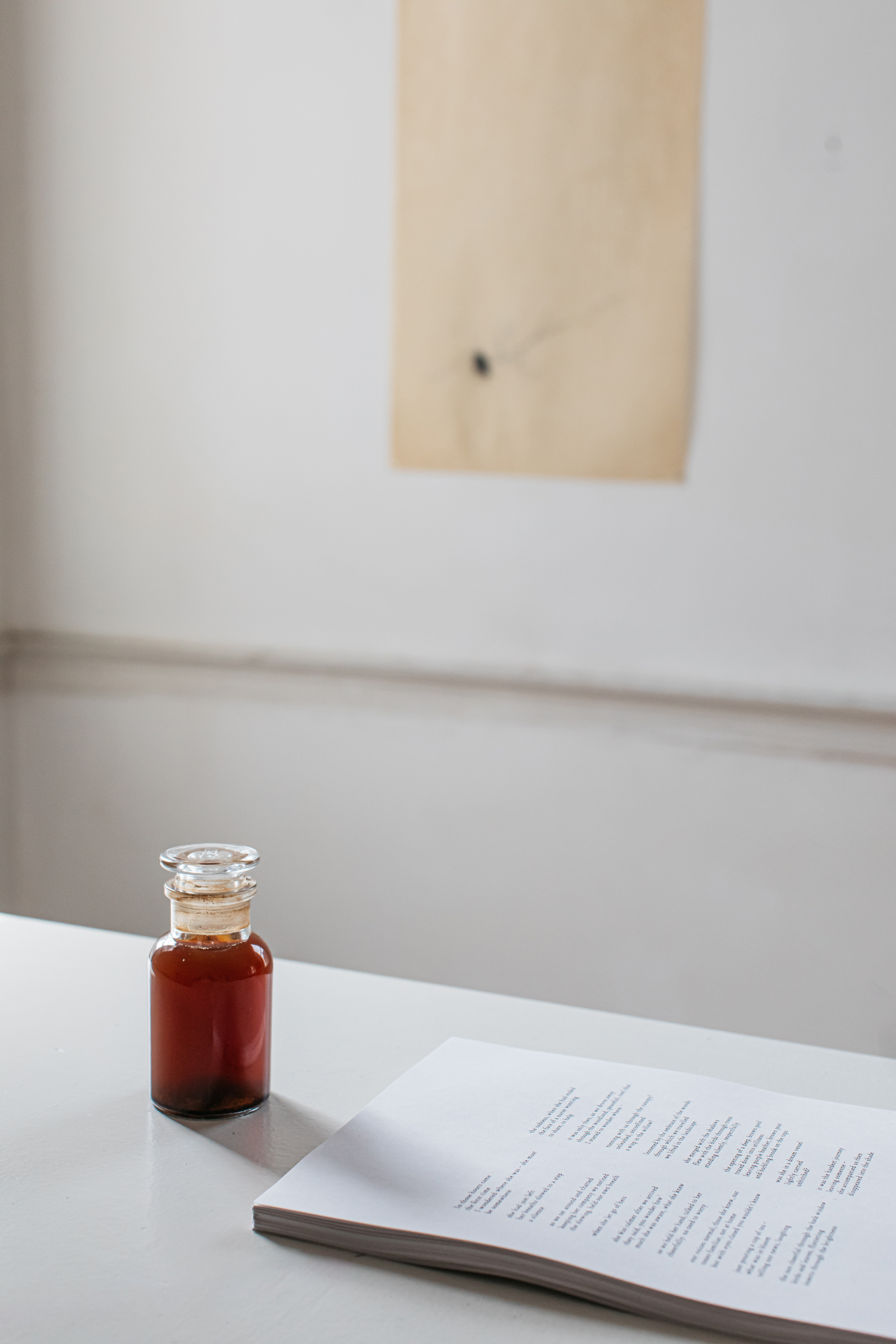

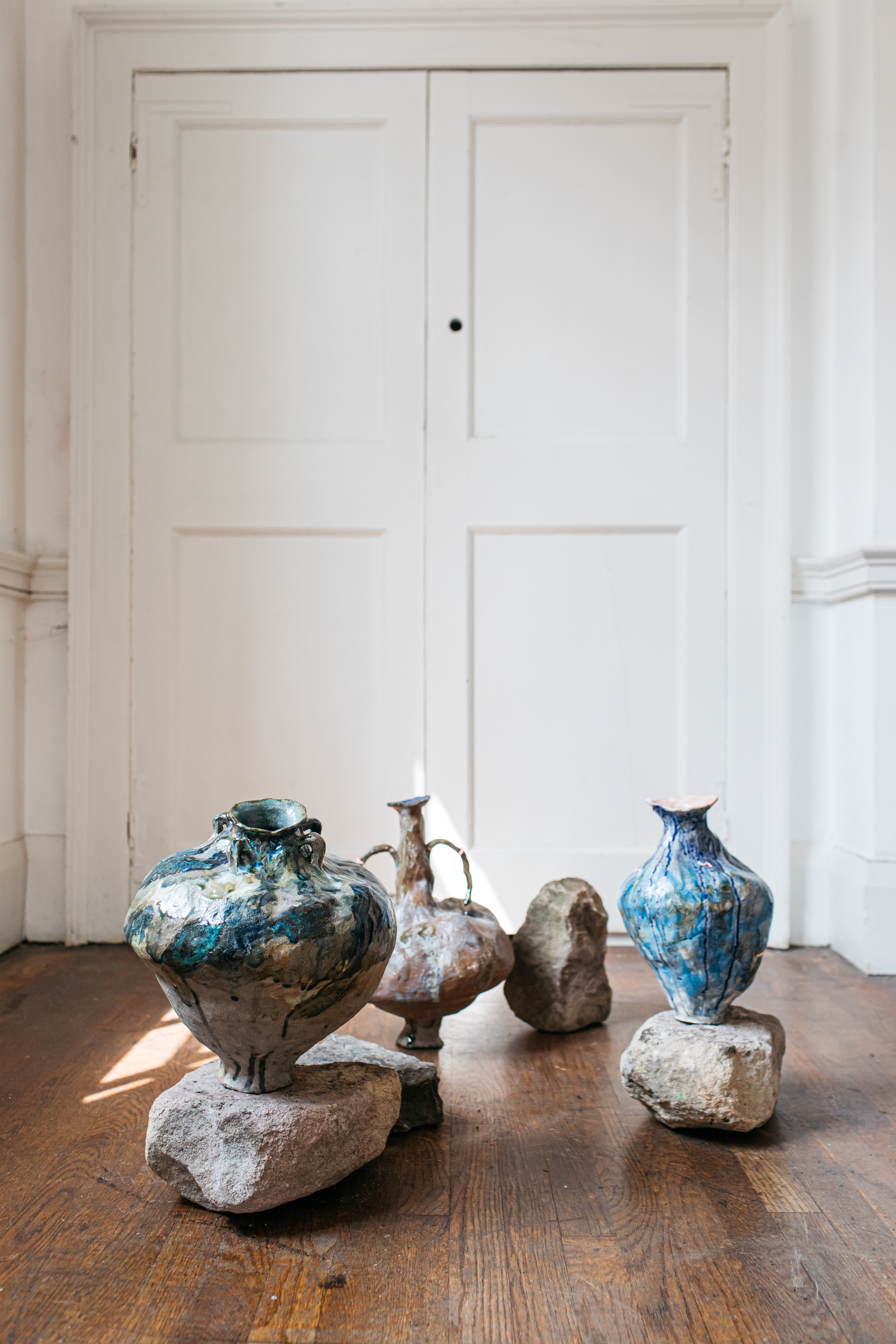
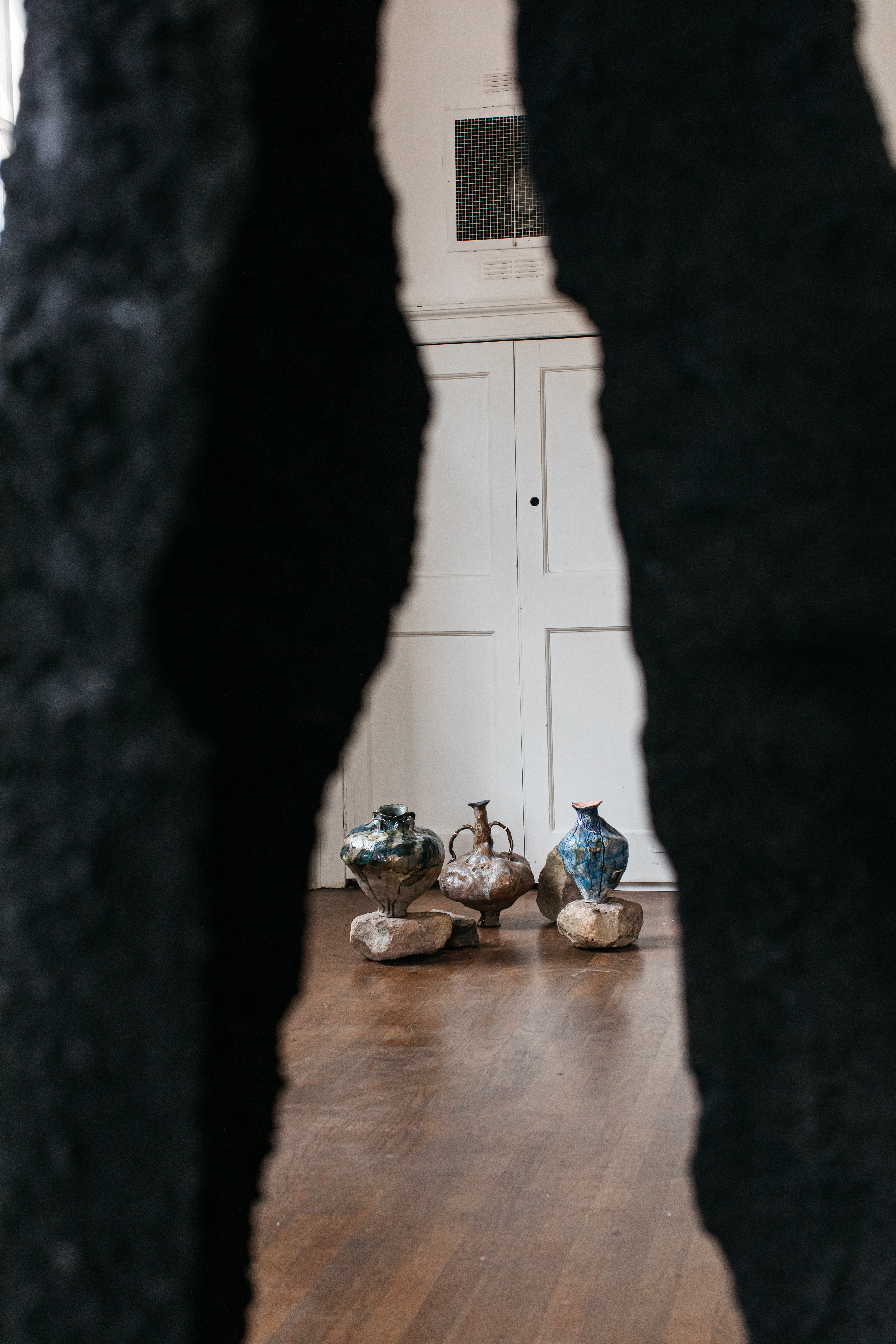
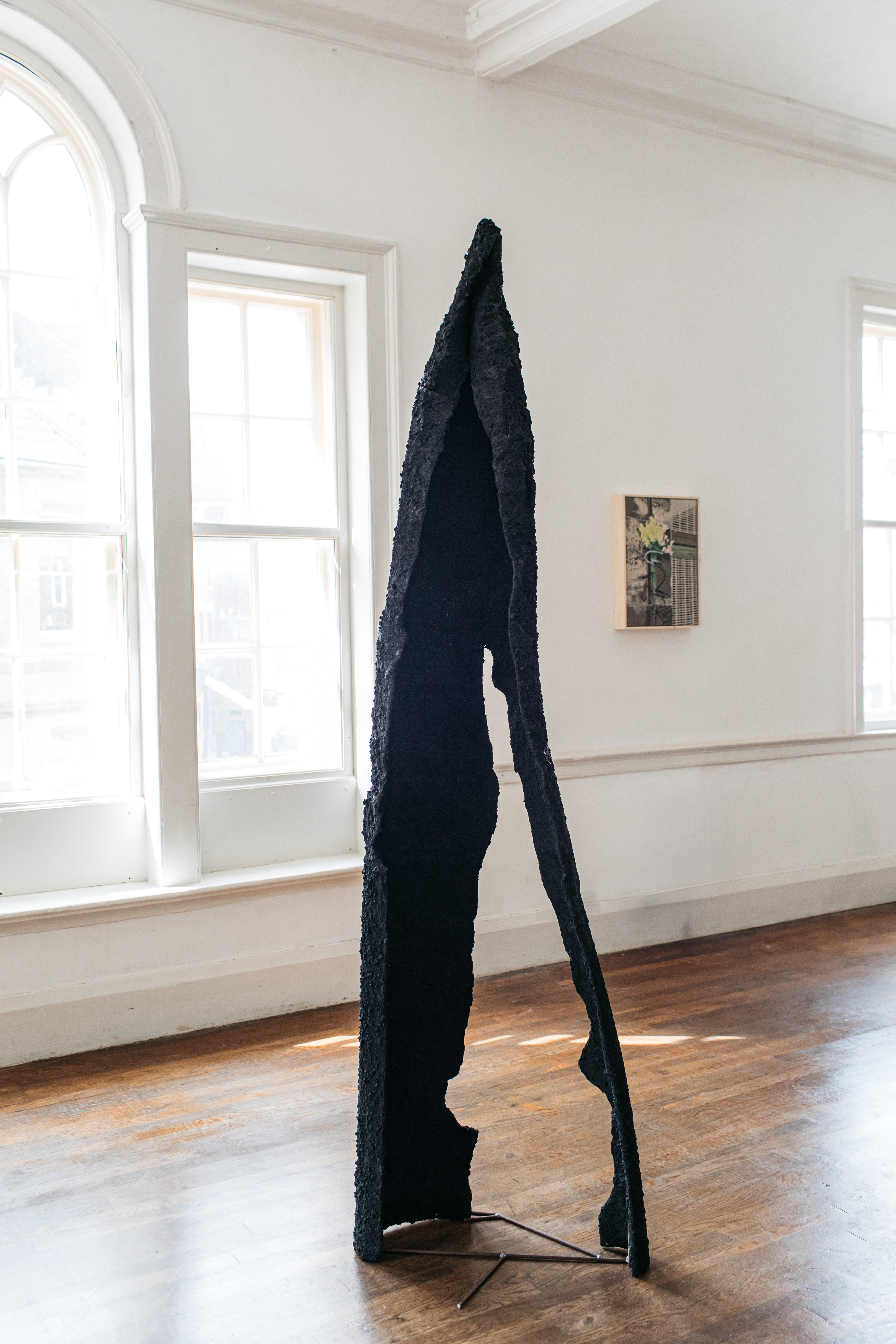


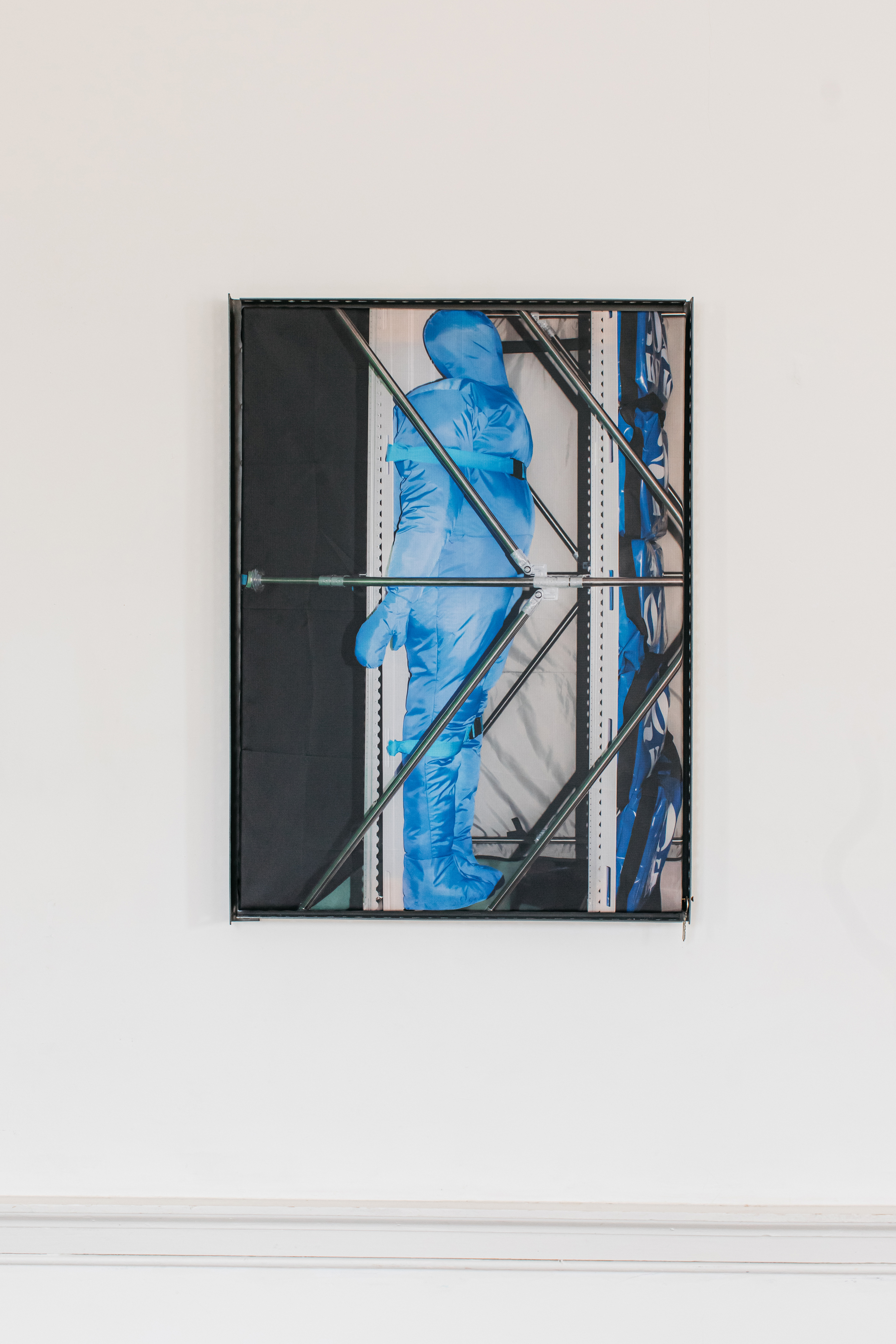
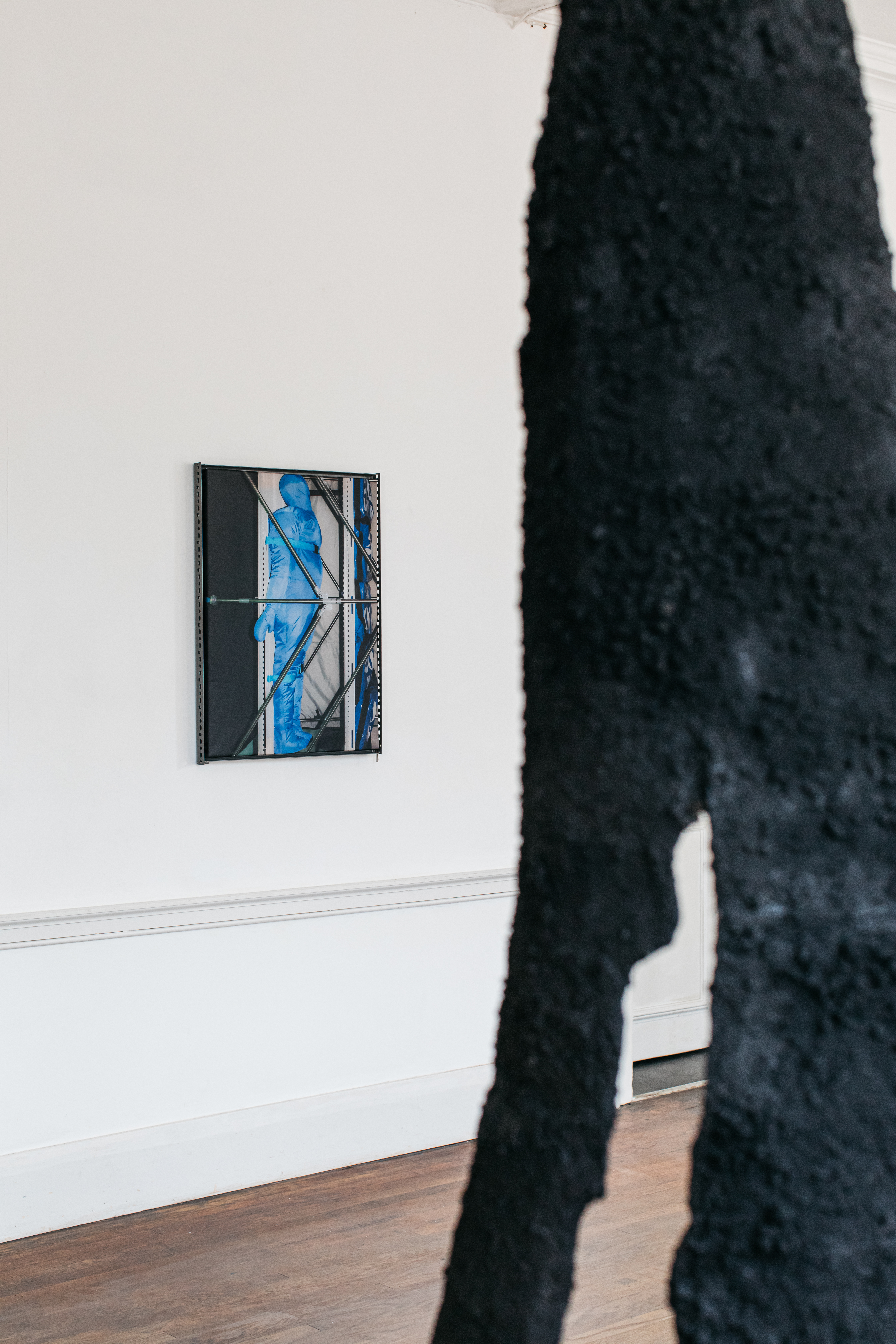

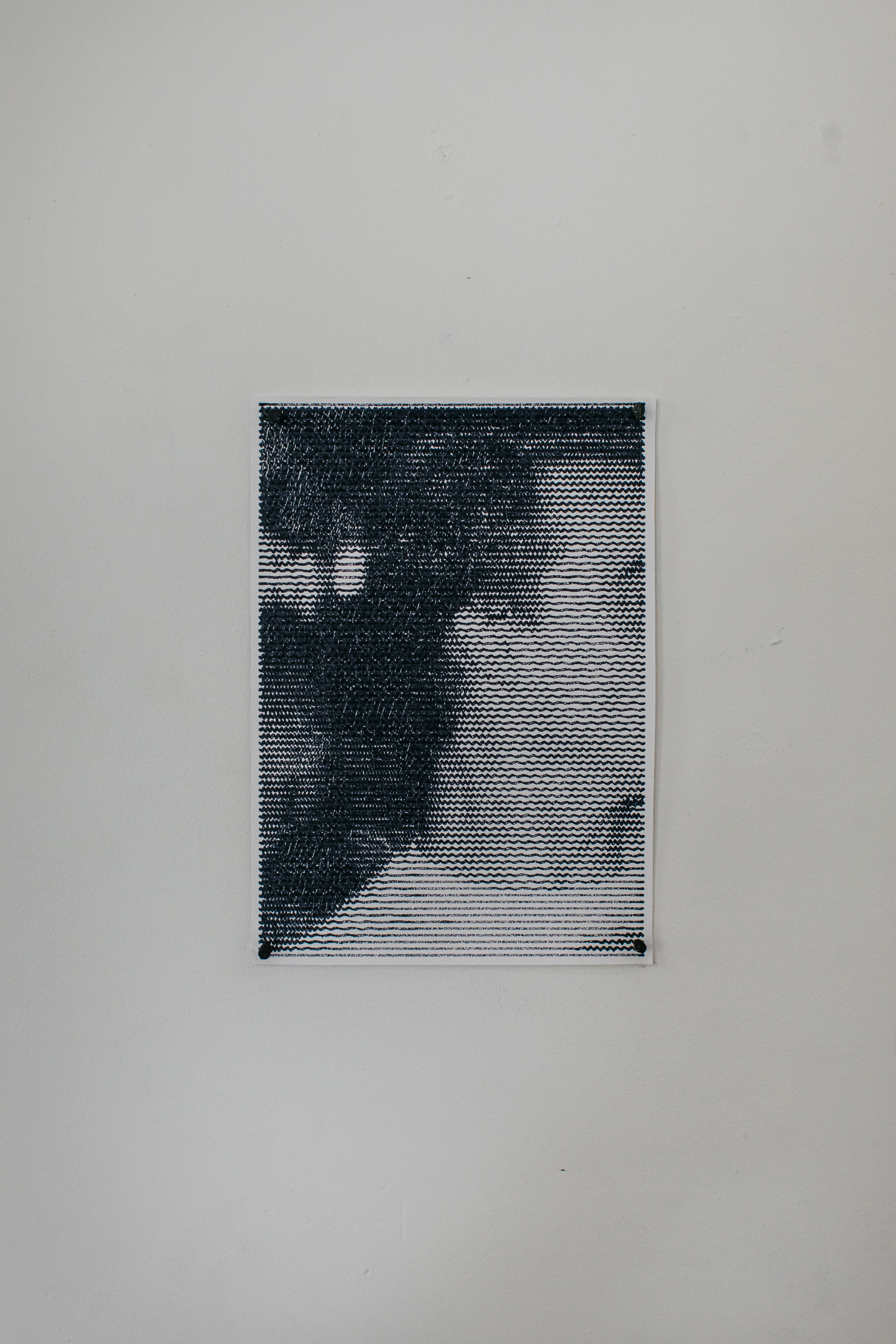
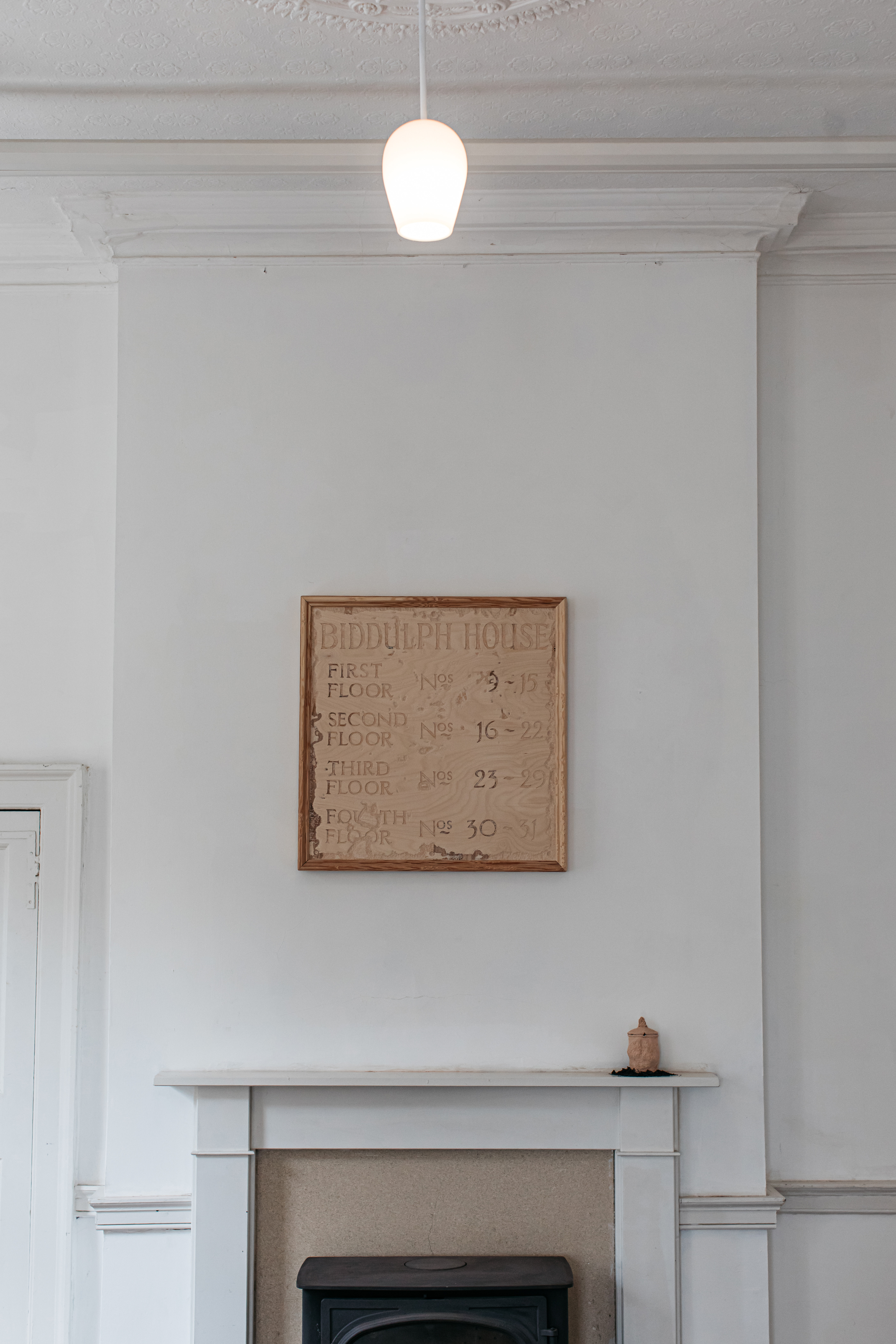

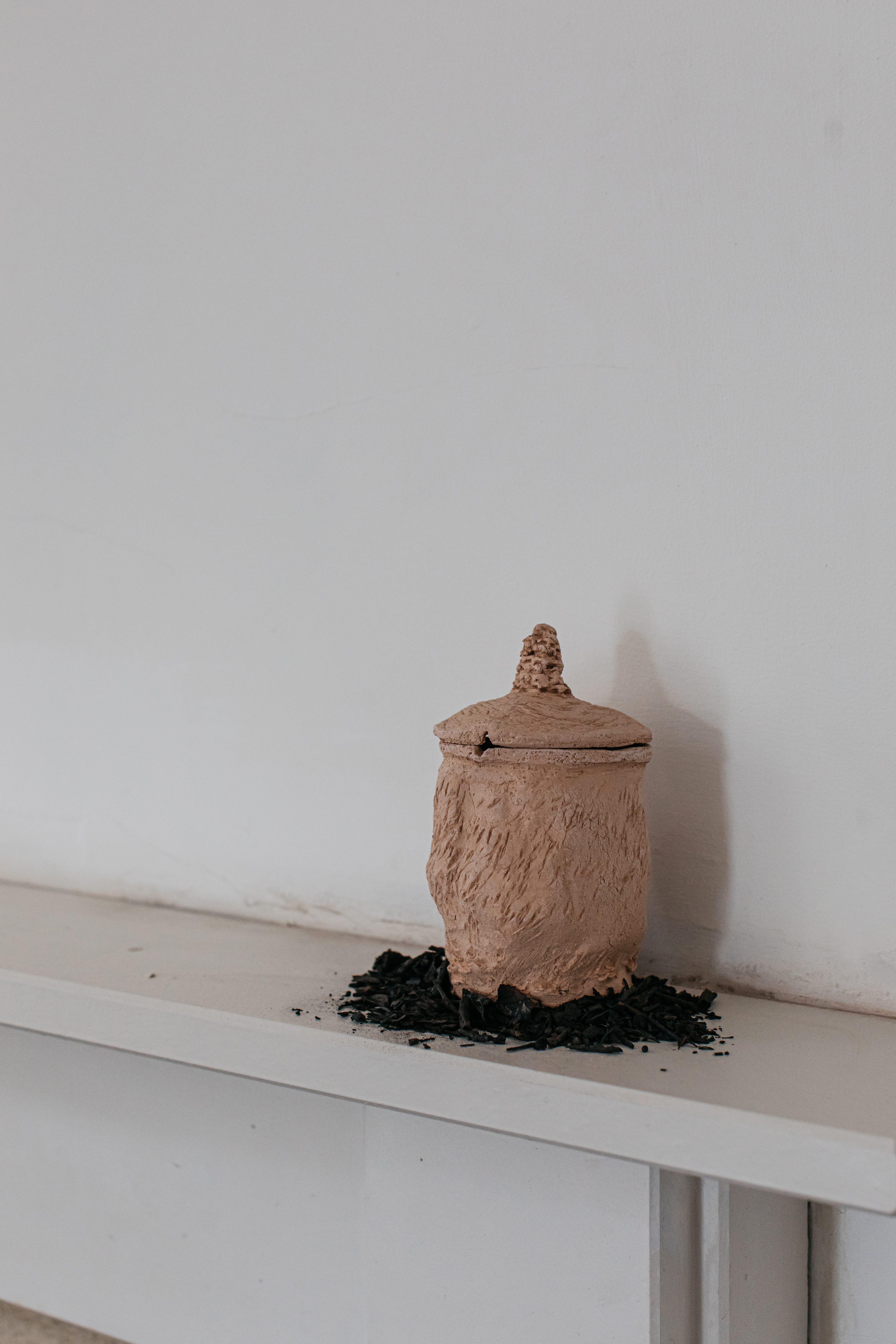
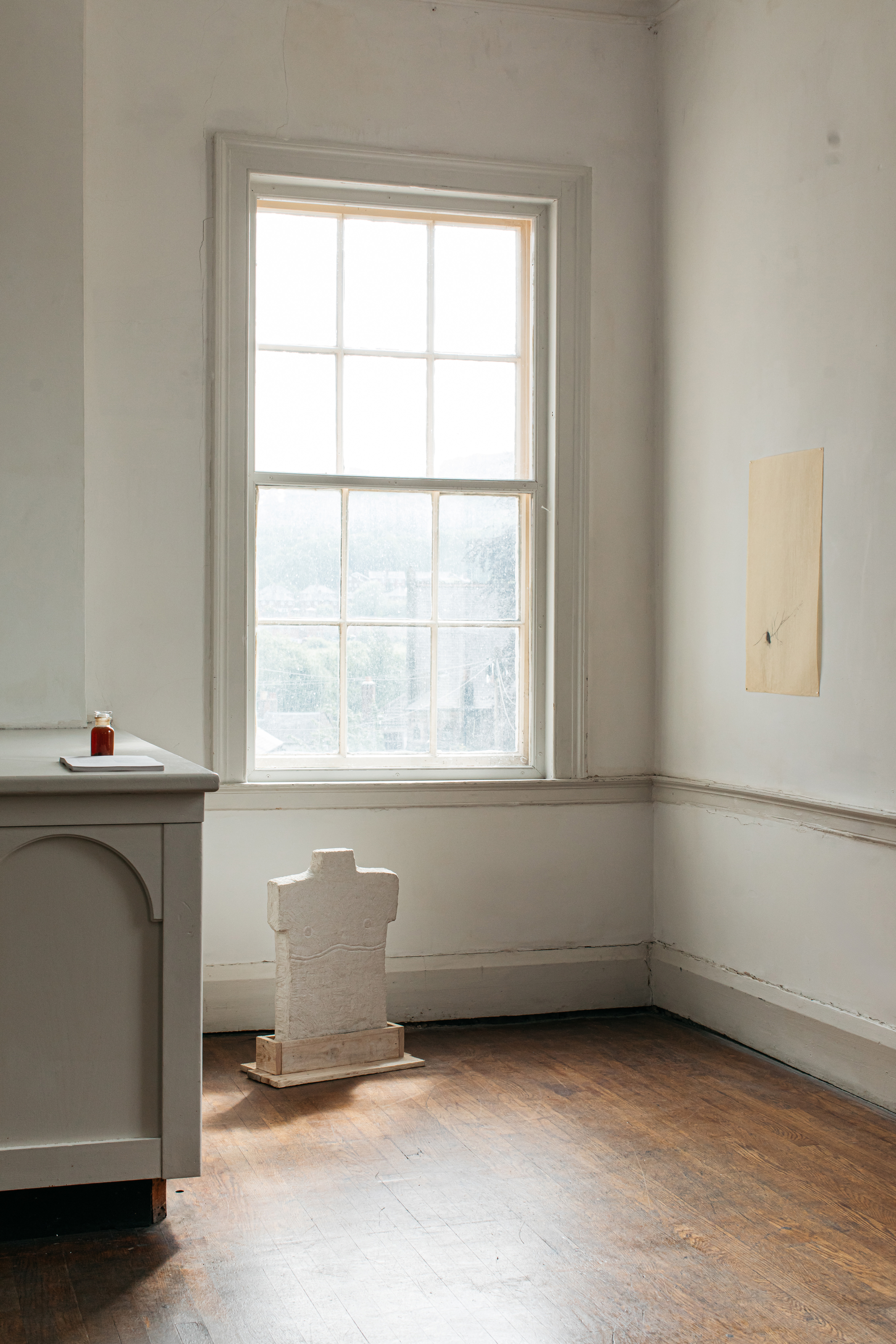
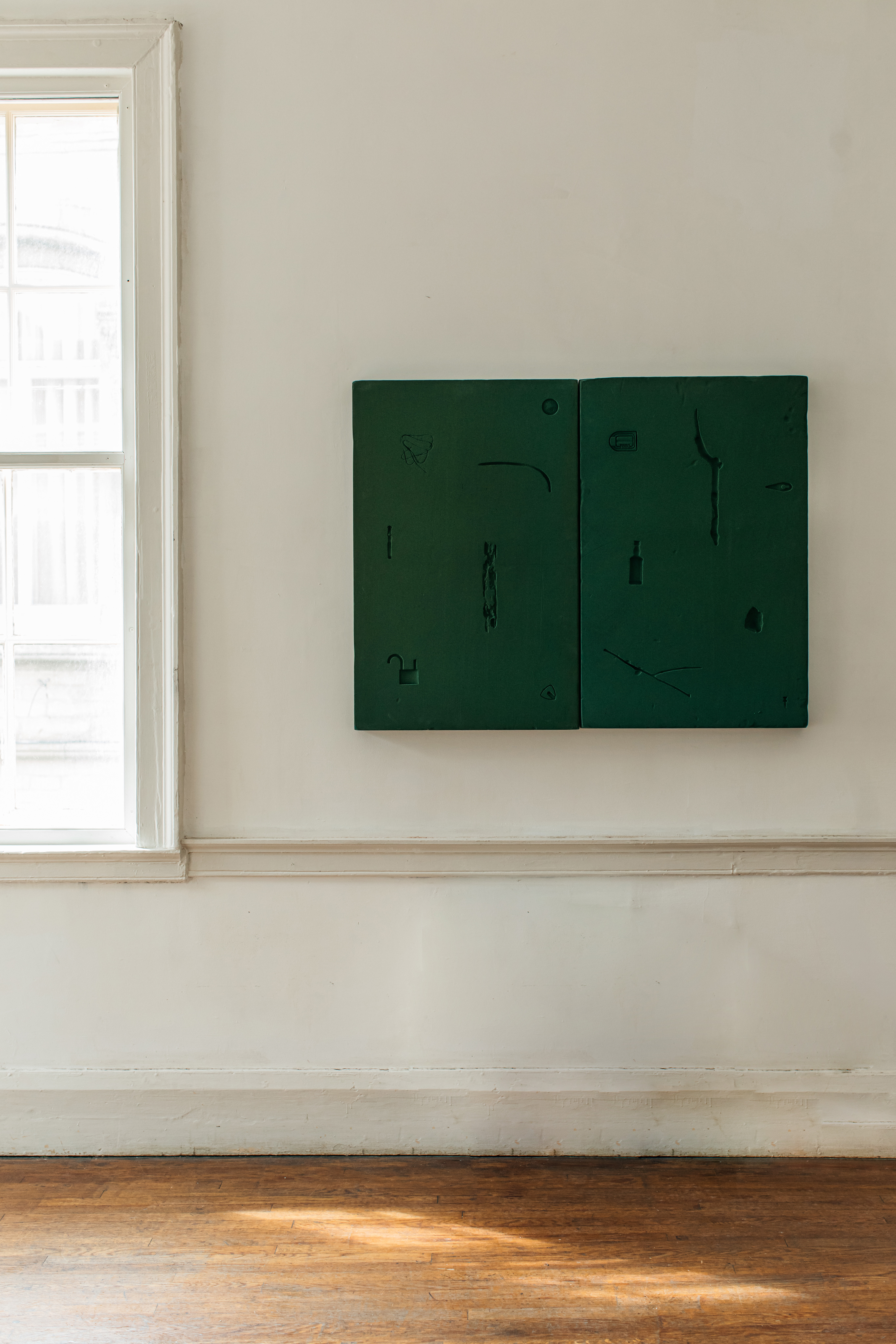
NECROLOGY: Becoming Soil, 2025
A workshop facilitated by Rosalie Bak at Haarlem Artspace & St Mary’s Church, Wirksworth
In Becoming Soil, living human bodies came together to co-sense what it is like to relate to non/living matters and materialities. Drawing on principles from the field of Haptonomy (the practice and study of human relationality and the phenomena of touch) participants were invited to make way for a more sensorial encounter with body, soil and death-care. Unfolding in three parts: ‘Noticing’, ‘Being with/in’, ‘Fermenting’, the creative and somatic exercises played with themes such as tenderness, intentionality, attention and affective touch, while also engaging with the exhibition space, works and surrounding landscapes. An audio-recording with site-specific meditation further guided participants to creep, leak and flow through all surrounding material, temporal, fleshy and microbial entanglements after which they gathered in a process of collective processing of the experience. The ink that was used in the creation of the collective work was made from the ferments of decomposing organic matter.
Curated by Victoria Sharples in partnership with NMRG & Playing Fields. Supported by the AHE Innovation Fund, University of Derby.
Photographs: Victoria Sharples.
A workshop facilitated by Rosalie Bak at Haarlem Artspace & St Mary’s Church, Wirksworth
In Becoming Soil, living human bodies came together to co-sense what it is like to relate to non/living matters and materialities. Drawing on principles from the field of Haptonomy (the practice and study of human relationality and the phenomena of touch) participants were invited to make way for a more sensorial encounter with body, soil and death-care. Unfolding in three parts: ‘Noticing’, ‘Being with/in’, ‘Fermenting’, the creative and somatic exercises played with themes such as tenderness, intentionality, attention and affective touch, while also engaging with the exhibition space, works and surrounding landscapes. An audio-recording with site-specific meditation further guided participants to creep, leak and flow through all surrounding material, temporal, fleshy and microbial entanglements after which they gathered in a process of collective processing of the experience. The ink that was used in the creation of the collective work was made from the ferments of decomposing organic matter.
Curated by Victoria Sharples in partnership with NMRG & Playing Fields. Supported by the AHE Innovation Fund, University of Derby.
Photographs: Victoria Sharples.
Heap, 2025
Stoneware toasted ceramic tiles, tin oxide, aluminium castor wheels, cement-based grout, plywood, softwood timber.
Heap is a site-specific sculpture inhumed in ceramic tiles that preserve surface indentations cast from a familial headstone at Burngreave Cemetery belonging to the artist’s antecedent: surname Heap. The name of the structure becomes performative – assimilating the surname to burial heap-mounds and archaeological unearthings. In form, the necro-architectural sculpture evidences practices of inversion informed by the earliest uses of casting in ancient death masks and votive reliefs. The tiles are abstractions–figurations of bodily absences–presences observing an infra-thin* separation between ‘the ‘mortiferous layer’ of its surface [the cast], from the living context in which we find it [the headstone]: life/death’ (Krauss 1996:77). Heap, therefore, performs a dissection or spatio-temporal cut of site, architecture and body. This procedural dissection may be read within the context of Karen Barad’s agential cut; where matter ‘cuts together/apart as a “holding together” of the disparate itself [...]’ (2012:46). The gridded composition, synonymous to graph paper and space-time nets, allows the loculi-like structure to be performative in its presence: at once material–immaterial, swaying between flat–volumetric, presenting a continuum of spacetimematterings. Heap builds on Sharples’ companion pieces Soft Shell (2023) and Gurney (2023), which methodologically attend to ‘agencies that interconnect substance, flesh and place’ (Alaimo 2018:436).
Shown as part of the exhibition NECROLOGY at Haarlem Artspace, Wirksworth.
Photographs: Emma Croman.
Stoneware toasted ceramic tiles, tin oxide, aluminium castor wheels, cement-based grout, plywood, softwood timber.
Heap is a site-specific sculpture inhumed in ceramic tiles that preserve surface indentations cast from a familial headstone at Burngreave Cemetery belonging to the artist’s antecedent: surname Heap. The name of the structure becomes performative – assimilating the surname to burial heap-mounds and archaeological unearthings. In form, the necro-architectural sculpture evidences practices of inversion informed by the earliest uses of casting in ancient death masks and votive reliefs. The tiles are abstractions–figurations of bodily absences–presences observing an infra-thin* separation between ‘the ‘mortiferous layer’ of its surface [the cast], from the living context in which we find it [the headstone]: life/death’ (Krauss 1996:77). Heap, therefore, performs a dissection or spatio-temporal cut of site, architecture and body. This procedural dissection may be read within the context of Karen Barad’s agential cut; where matter ‘cuts together/apart as a “holding together” of the disparate itself [...]’ (2012:46). The gridded composition, synonymous to graph paper and space-time nets, allows the loculi-like structure to be performative in its presence: at once material–immaterial, swaying between flat–volumetric, presenting a continuum of spacetimematterings. Heap builds on Sharples’ companion pieces Soft Shell (2023) and Gurney (2023), which methodologically attend to ‘agencies that interconnect substance, flesh and place’ (Alaimo 2018:436).
Shown as part of the exhibition NECROLOGY at Haarlem Artspace, Wirksworth.
Photographs: Emma Croman.


